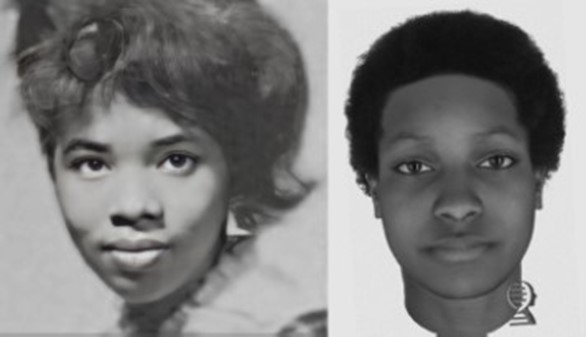PORTLAND, Ore. (KOIN) — A break in a decades-long Oregon cold case has finally helped solve the identity of a young woman whose remains were found 54 years ago today. Investigators worked for decades to solve the mystery of the skeleton found in a shallow grave on Sauvie Island on Feb. 23, 1970.
Forensic anthropologist Nici Vance started looking into the case back in 2004 when the State Medical Examiner’s Office took on many long-shelved cases. As DNA technology advanced, they started analyzing the remains.
Sunshine to snow possible next week in Oregon, Washington
“That DNA profile was loaded into this database, it was searching for many years since 2011, and just didn’t hit to any missing persons profile, any family reference profiles,” Vance said.
They were able to eventually analyze the DNA enough to see what she might’ve looked like, but still, there were not enough leads to get an answer as to who she was. When the Oregon State Police Medical Examiner’s Office received a national grant to start looking into these technologies, they were able to look at forensic genealogy data after seeing it used to catch the Golden State Killer.
-
A forensic approximation of remains based on DNA evidence (not an actual photo). February 23, 2024 (courtesy Oregon State Police). -
From left: Sandra Young’s yearbook photo, and a forensic approximation of remains later identified as Young. February 23, 2024. (courtesy Oregon State Police).
“We knew that this was a technology that could be utilized, not necessarily to find a suspect, but to identify these unidentified individuals that we had had in our facility some for decades,” Vance said.
Man arrested following standoff after entering home with knife: Portland police
Years later, a match came in 2023 after a family member submitted their DNA to GEDmatch and detectives and scientists began to work with the potential family. Finally, this past year, they identified the girl as their teenage sister Sandra Young, a Grant High School student who went missing in the late 1960s.
“It was a good feeling. It’s bittersweet to find this first and last name of this young girl who had her whole life ahead of her,” Vance said.
Just like Young’s case for years, many remain unidentified – about 1% of medical examiner cases each year.
“They’re either recognizable or they’re skeletonized. We’ve performed certain analyses on them, but we can’t necessarily move the cases forward,” Vance said.
She adds that with continued advances in technology, they will continue to re-analyze cases and ultimately hope to get them back to their loved ones.
“I think our community needs to know that we’ll never give up on these cases,” Vance said.
There are still many cases here in the state yet to be solved and Vance says a lot of that will also come down to funding. Genetic genealogy casework and testing can cost around $6,000-$10,000 for each case.
For the latest news, weather, sports, and streaming video, head to KOIN.com.
Signup bonus from






